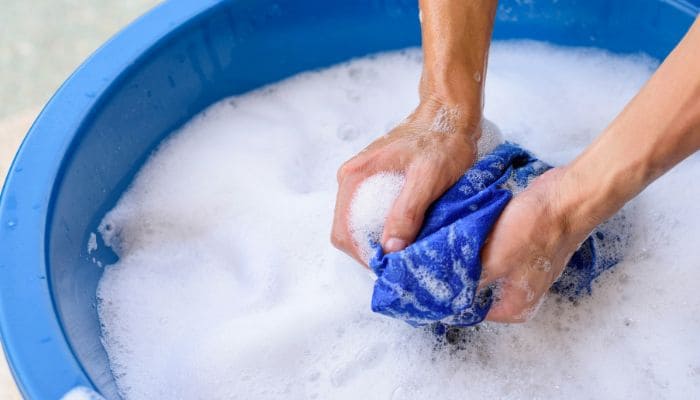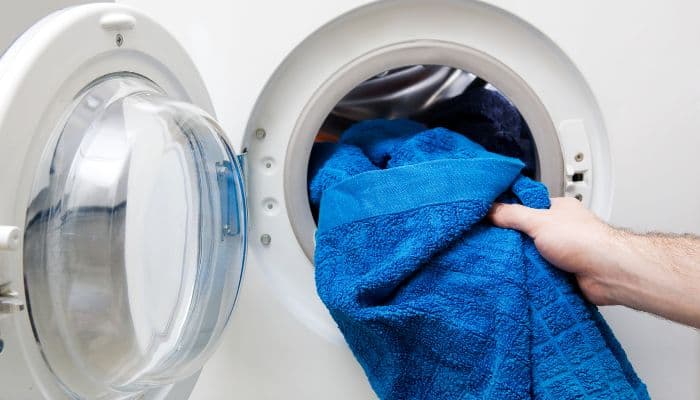Vintage wool blankets can be valuable family heirlooms, cherished mementos, or simply cozy additions to your home. Like other fabrics, they also accumulate dust, dirt, and stains over time.
If you want to preserve the beauty and longevity of your vintage wool blankets, proper cleaning and maintenance are very very important.
In this article, we will share expert tips and techniques on how to clean vintage wool blankets safely and effectively.
Step 01: Assess the Condition and Composition of the Blanket
Before you start cleaning your vintage wool blanket, assess its condition and composition. Wool is a delicate and sensitive material that requires gentle handling and specific cleaning methods.
- Now determine the type of wool, its age, its color, and any damage or stains that require special attention.
- Some vintage wool blankets are made of specific types of wool, such as Merino, Shetland, or Cashmere, which have different textures, strengths, and cleaning requirements.
- Also, some vintage wool blankets may have dyes or finishes that can fade or bleed during cleaning, leading to discoloration or damage.
Note: If your vintage wool blanket has tears, holes, or moth damage, you may need to repair or restore it before cleaning it to avoid further damage.
Step 02: Choose the Right Cleaning Method
Once you have assessed the condition and composition of your vintage wool blanket, choose the appropriate cleaning method. There are several ways to clean wool blankets, depending on the type of wool, the level of soiling, and the washing equipment and products available.
We noted here are 03 common cleaning methods and best practices for vintage wool blankets:
How to Clean Vintage Wool Blanket by Hand

- Fill a bathtub or basin with lukewarm water. The water should be just warm to the touch, not hot.
- Add a mild detergent or wool wash to the water. Use a detergent that is suitable for wool, as regular laundry detergent can be too harsh and damage the fibers.
- Submerge the wool blanket in the water. Gently push it down until it is fully submerged, and make it saturated completely with water.
- Gently agitate the blanket with your hands. Use a gentle, swirling motion to move the water around and help distribute the detergent evenly.
- Let the blanket soak for 10-15 minutes. This will give the detergent time to penetrate the fibers and loosen any dirt or stains.
- Drain the water from the bathtub or basin. Once the water is drained, gently press down on the blanket to remove any excess water.
- Rinse the blanket thoroughly with clean water. You can do this by refilling the bathtub or basin with clean water and then submerging the blanket again, or by holding it under a running faucet.
- Press the excess water out of the blanket. Do this by gently squeezing it or rolling it up in a towel and pressing it down to absorb the water.
- Lay the blanket flat on a clean surface. Reshape the blanket as needed, smoothing out any wrinkles or bumps.
- Allow the blanket to air dry completely. This takes several hours or even a full day, depending on the humidity and temperature in your home. Once the blanket is dry, it should be clean and fresh, and ready to use again.
Machine Washing the Wool Blanket

Determine if your wool blanket is suitable for machine washing. If it is heavily soiled or delicate, hand washing may be a better option.
- Choose a gentle cycle on your washing machine, such as wool or delicate.
- Select a mild detergent or wool wash. Never use hot water, bleach, or fabric softeners as we mentioned above.
- Place the wool blanket in the washing machine and start the cycle.
- Once the washing cycle is complete, remove the blanket from the machine.
- Decide how you want to dry the blanket. You can either air dry it by laying it flat or hanging it on a clothesline, or you can use a dryer on a low or air-only setting.
- If you choose to use a dryer, add a few clean tennis balls or dryer balls to the machine to help fluff the fibers of the blanket.
- Once the blanket is dry, check it for any remaining stains or spots. If necessary, spot-clean the area with a wool-specific cleaner.
Dry Cleaning the Wool Blanket

- Assess the wool blanket: Determine whether the wool blanket is too delicate or valuable to risk washing at home. If the blanket is particularly delicate or valuable, it may be best to take it to a professional dry cleaner.
- Find a professional dry cleaner: Look for a dry cleaner who specializes in wool fabrics and has experience in handling delicate fabrics. You can check reviews online or ask for recommendations from friends or family.
- Take the wool blanket to the dry cleaner: Bring the wool blanket to the dry cleaner, and inform them of any stains. The dry cleaner will examine the blanket and give you an estimate of the cost and timeframe for cleaning.
- Dry cleaning process: The dry cleaning process involves using solvents and specialized equipment to remove dirt and stains from the wool fibers without using water. The dry cleaner will carefully handle the wool blanket, ensuring that it is not exposed to any solvents that could cause discoloration or shrinkage.
- Inspection and finishing: After the cleaning process, the dry cleaner will inspect the wool blanket for any remaining stains or damage. If needed, they may perform additional spot cleaning or repairs. Finally, the wool blanket will be finished and packaged for pick up or delivery.
Note: Dry cleaning can be expensive, and it may not be suitable for all types of wool blankets. Some solvents can cause discoloration or shrinkage, so it’s important to choose a dry cleaner with experience in handling delicate wool fabrics.
Step 03: Treat Stains and Odors Carefully
If your vintage wool blanket has any stains or odors that persist after washing or dry cleaning, use some specific treatments to address them. Below are some safe and effective ways to treat stains and odors on wool blankets:
- For fresh spills or stains, blot the affected area with a clean, dry cloth or paper towel to absorb as much liquid as possible. Then, sprinkle some baking soda or cornstarch over the stain and let it sit for a few hours or overnight.
- Afterward, brush or vacuum the powder off the blanket and inspect the stain. If it still persists, repeat the process or use a wool-specific stain remover, following the manufacturer’s instructions.
- For odors, sprinkle some baking soda or activated charcoal over the blanket and let it sit for a few hours or overnight. These substances will absorb and neutralize the odor molecules without damaging the wool fibers.
- Then vacuum or brush the powder off the blanket and inspect the odor. If it still lingers, you can air out the blanket outdoors or use a wool-specific odor remover, following the manufacturer’s instructions.
Step 04: Store and Display the Blanket Properly
After you have cleaned your vintage wool blanket, store and display it properly to maintain its quality and beauty. Wool blankets should be stored in a cool, dry, place, away from moisture, or pests.
You can fold the blanket loosely and place it in a cotton or linen storage bag or on a shelf or drawer lined with acid-free paper or cloth. Never store the blanket in plastic bags, which can trap moisture and cause mildew or mold.
Conclusion
Cleaning vintage wool blankets requires patience, care, and knowledge of the wool type, condition, and cleaning methods. By following the tips and techniques we have shared in this article, you can safely and effectively clean vintage wool blankets and preserve their value, beauty, and functionality for generations to come.



![How to Wash an UGG Blanket in 2023? [Secret Tips Revealed]](https://bestcleaningtools.com/wp-content/uploads/2023/03/1-min-1.jpg)